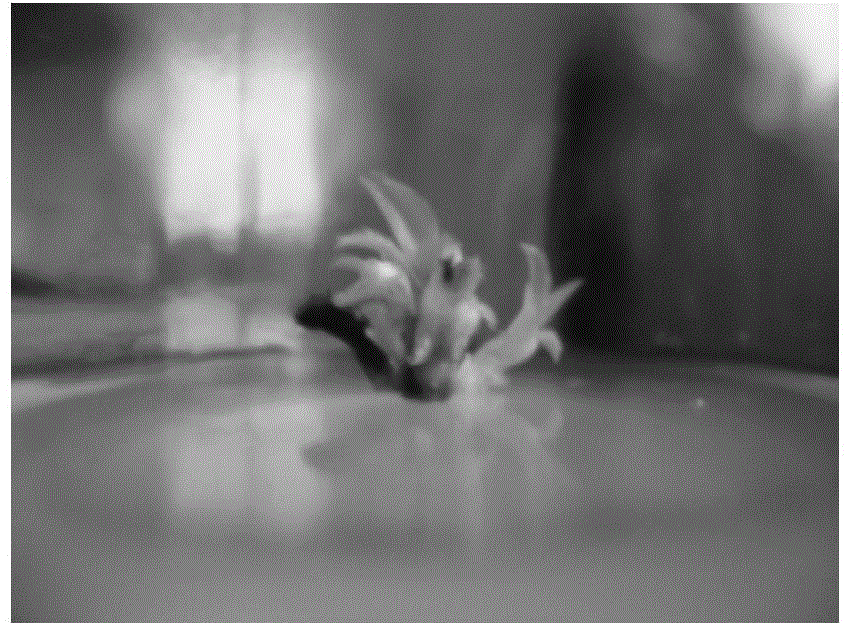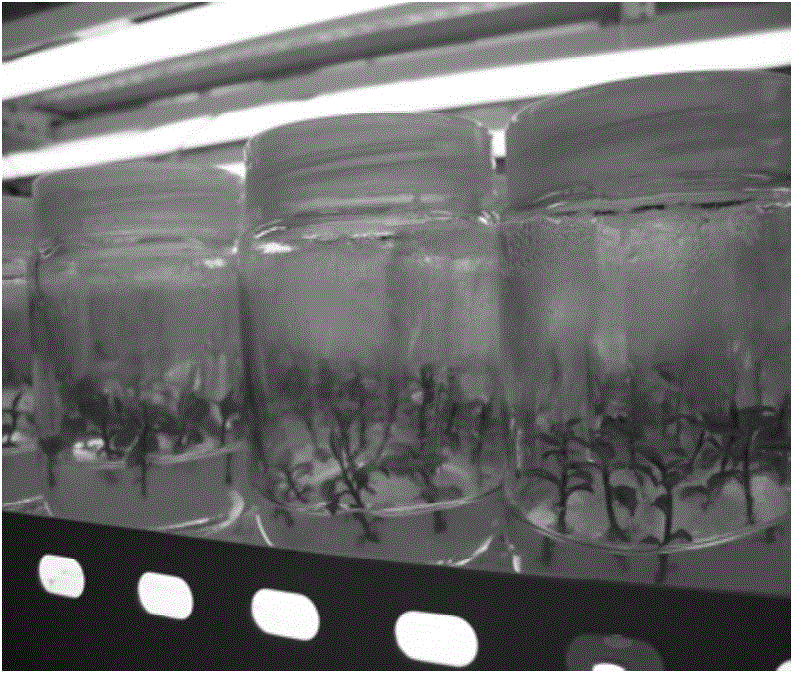Non-tube rootage method for camellia oleifem tissue culture seedling
A technology of tissue culture seedlings and external roots, applied in the field of plant tissue culture, can solve the problems of poor transpiration resistance and adaptability, low degree of lignification, and small number of effective seedlings, so as to save production costs, seedling space, and root development Good effect of shortening the seedling cycle
- Summary
- Abstract
- Description
- Claims
- Application Information
AI Technical Summary
Problems solved by technology
Method used
Image
Examples
Embodiment 1
[0025] The formula of the HB culture medium of this embodiment is shown in Table 1, and it is prepared as follows per liter: except water, each component is dissolved in a small amount of water, then add water to make up to 1 L, and sterilize for later use. The 1 / 2 HB medium refers to the medium formed by halving the content of other components in the HB medium except water, sugar and carrageenan.
[0026] The Camellia oleifera tissue culture seedling rooting method outside the bottle of the present embodiment, its steps are as follows:
[0027] 1. Establishment of a sterile line—Using the excellent clones of Camellia oleifera "Ganwu" series, the semi-lignified branches of the current year's 25-year-old mother tree are used as explants. After cutting off the leaves, soak them in detergent for 30 minutes and clean them with a brush. Rinse the surface under running water for 1 to 2 hours, take it to the ultra-clean workbench and soak it in alcohol for 45 seconds, then disinfect ...
Embodiment 2
[0036] The formula of the HB culture medium of this embodiment is shown in Table 1, and it is prepared as follows per liter: except water, each component is dissolved in a small amount of water, then add water to make up to 1 L, and sterilize for later use. The 1 / 2 HB medium refers to the medium formed by halving the content of other components in the HB medium except water.
[0037] The Camellia oleifera tissue culture seedling rooting method outside the bottle of the present embodiment, its steps are as follows:
[0038] 1. Establishment of a sterile line—Using the excellent clones of Camellia oleifera "Ganwu" series, the semi-lignified branches of the current year's 25-year-old mother tree are used as explants. After cutting off the leaves, soak them in detergent for 30 minutes and clean them with a brush. Rinse the surface under running water for 1 to 2 hours, take it to the ultra-clean workbench and soak it in alcohol for 45 seconds, then disinfect it with 0.1% mercuric c...
PUM
 Login to View More
Login to View More Abstract
Description
Claims
Application Information
 Login to View More
Login to View More - R&D
- Intellectual Property
- Life Sciences
- Materials
- Tech Scout
- Unparalleled Data Quality
- Higher Quality Content
- 60% Fewer Hallucinations
Browse by: Latest US Patents, China's latest patents, Technical Efficacy Thesaurus, Application Domain, Technology Topic, Popular Technical Reports.
© 2025 PatSnap. All rights reserved.Legal|Privacy policy|Modern Slavery Act Transparency Statement|Sitemap|About US| Contact US: help@patsnap.com



